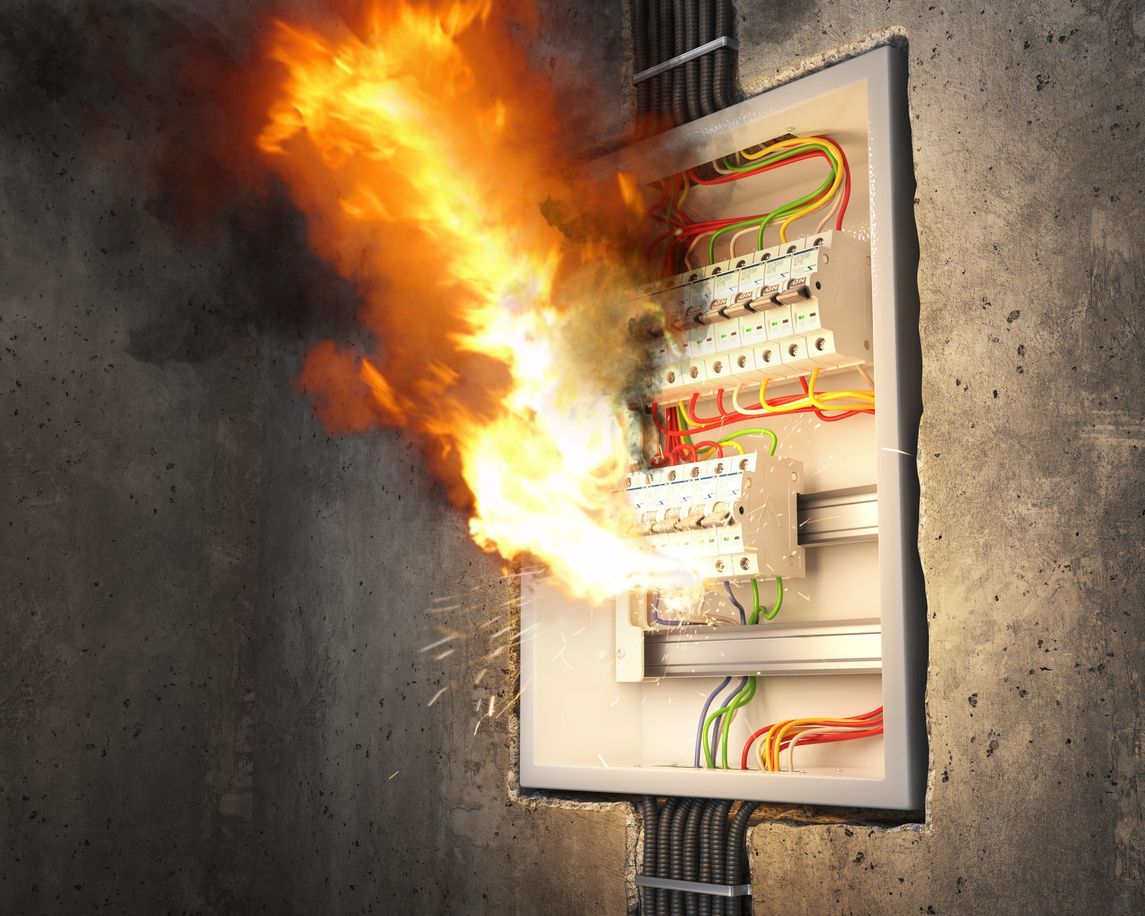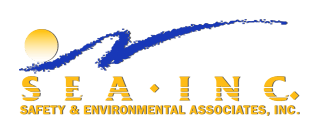Blog Layout
NEW EPA PROPOSAL WILL CHANGE CLEAN WATER ACT REPORTING REQUIREMENTS FOR SEA CLIENTS

New changes to the Clean Water Act reporting requirements will affect many businesses throughout the nation. It is important to understand how these changes will affect you and your company to ensure that you remain compliant with EPA standards.
The EPA’s proposed changes to Clean Water Act reporting requirements require those firms still submitting paper-based NPDES reports to convert to electronic reporting. According to the Agency, the switch will improve compliance with Clean Water Act specifications as well as facilitate improved protection of U.S. waters. However, for those businesses and industries that are accustomed to filing written reports, the switch to electronic reporting will necessitate costly system changes.
SEA Inc., a Little Rock-based environmental health and safety service company, makes it easy and economical to comply with EPA regulations. SEA provides complete environmental services, including planning, training and automated reporting.
Benefits of the Proposed New Clean Water Act Reporting Requirements
A total of 46 states have EPA authorization to administer the NPDES – National Pollutant Discharge Elimination System. Once reporting is completely digitized, community members will be able to look up information on discharges by local industries and facilities that impact regional environmental health.
EPA projects that the proposed e-reporting rule will save a significant amount of money since it will eliminate the need for government workers to manually enter the data that they receive in written form. Instead, NPDES participants will submit it directly into the system. This will also ensure that this information becomes available more quickly to the public.
While these improvements are beneficial, a change in reporting methods will represent difficulties for those municipal systems, industries and other facilities working within the NPDES framework. The rule would become effective one year after it becomes final, providing a relatively small window for participants to comply with new Clean Water Act reporting requirements. Advanced planning is critical, and SEA is a leading environmental service provider with the specialized knowledge to help organizations plan for and complete the conversion as smoothly as possible.
Planning and Training for the Proposed Changes
Although EPA is already planning webinars to help bring NPDES organizations up to speed with the new rule, the experts at SEA believe that hands-on training offers a far better option for those NPDES-permitted municipalities, businesses and industries that must make changes to meet the new reporting requirements. That is why SEA offers comprehensive training, planning and consulting, not only for NPDES compliance but for such programs as Hazardous Waste Management, RCRA Compliance, DOT, SPCC, and Hazardous Materials Management as well. SEA training instructors have updated industry knowledge and the ability to convey that information in an understandable format to managers and workers who deal with the handling and disposal of hazardous materials or industrial waste.
SEA Services Make Compliance Simple
SEA also provides full e-reporting services to organizations that lack the appropriate infrastructure to effectively convert from paper-based communications to the new proposed Clean Water Act reporting requirements. Because failure to comply with NPDES requirements may result in significant penalties, entrusting SEA’s integrated environmental reporting services to effectively meet state and federal requirements is the logical choice. See a full list of OSHA, EPA, and other regulatory standard training courses offered here at SEA Inc.

By Derek Jennings
•
February 10, 2025
Each year, as the Occupational Safety and Health Administration (OSHA) releases its list of the top 10 workplace safety violations, a pattern emerges that begs a question: Are these frequent violations a sign that employers continue to struggle with the same safety issues, or does it reflect a disposition among OSHA inspectors to focus on areas where they are trained to focus? The Persistent Issue of Repeated Findings The repetition of certain violations year after year might seem surprising, but it underscores a significant challenge in workplace safety management. The top violations tend to be those that are most visible and easiest to spot during inspections, such as fall protection and hazard communication. This consistency suggests that while awareness is high, practical implementation and adherence to safety practices lag behind. Top 10 Most Cited Health and Safety Standards of 2024 1. . Fall Protection, General Requirements: 6,307 violations For the 14th consecutive year, fall protection tops the list of OSHA's enforcement priorities. This emphasis is not arbitrary; OSHA has designated fall protection as a national emphasis area, making it a primary focus during inspections. It's often one of the easiest violations to spot without extensive investigation skills. The OSHA standard 1926.501 mandates that employers must provide fall protection systems like guardrails, safety nets, or personal fall arrest systems for workers at risk of falls of six feet or more in construction and four feet in general industry. Often, the major factor in these violations is human behavior. Many offenders might think, "No one is watching, and this will only take a moment, so it's no big deal." However, this mindset can lead to non-compliance with critical safety measures, putting worker safety at significant risk.

By Derek Jennings
•
February 7, 2025
The Occupational Safety and Health Administration (OSHA), in collaboration with the Partnership for Electrical Safety and KEMA Laboratories, has recently unveiled new guidance aimed at addressing arc flash hazards in the workplace. This guidance is a crucial update that highlights the need for comprehensive electrical safety programs that specifically include measures to protect against arc flash hazards. Here’s what employers need to understand about the new directives and how they can effectively respond. Understanding Arc Flash and OSHA's Recommendations An arc flash is a type of electrical explosion that results from a low-impedance connection to the ground or another voltage phase in an electrical system. The new guidance provided by OSHA not only offers a clear definition of what constitutes an arc flash but also elaborates on methods to mitigate such hazards during electrical work. The guidance includes detailed documents for employers and useful handouts for employees, emphasizing the common myths and the reality of arc flash dangers. The Role of NFPA 70E OSHA’s guidance strongly correlates with the standards outlined in NFPA 70E, the National Fire Protection Association’s standard for electrical safety in the workplace. Employers who are already compliant with NFPA 70E likely have a written Electrical Safety Program (ESP) that includes protocols for arc flash hazards. This new guidance serves to reinforce the importance of these existing standards while also urging those without comprehensive plans to take immediate action. What if You Don’t Have a Comprehensive ESP? For employers who have yet to develop an ESP that addresses arc flash hazards, OSHA’s guidance is a wake-up call. It is crucial to recognize that general workplace safety standards, although not specifying arc flash, require protection against electrical hazards under regulations like 1910.333. The absence of specific OSHA standards for arc flash does not excuse employers from the responsibility of protecting their employees from such risks. Implementing Effective Arc Flash Protection Measures Incident Energy Analysis: A foundational step in arc flash protection is conducting an incident energy analysis. This process involves studying the facility’s electrical systems to calculate the potential energy released in the event of an arc flash. Understanding this energy potential is essential for determining the arc flash boundary—the distance within which a person could receive second-degree burns or worse if exposed to an arc flash. Developing a Risk Assessment Procedure: Employ ers need to establish a procedure for assessing the risks associated with arc flash. This includes evaluating the tasks being performed, the condition of the electrical equipment, the maintenance history of the equipment, the energy involved, and the potentia l for human error. Deciding on Protective Measures: Once risks are assessed, decisions must be made regarding the best ways to protect employees. This often involves the use of Arc-Rated Pe rsonal Protective Equipment (PPE) and could also include engineering controls such as redesigning parts of the electrical system to minimize arc flash risks. Proactive Versus Reactive: The Choice is Yours The latest guidance from OSHA should be viewed as an unofficial yet critical call to action for employers to either update their existing safety measures or develop new protocols in line with NFPA 70E. Being proactive about electrical safety not only helps in compliance with OSHA’s standards but fundamentally enhances the safety and well-being of employees. Final Thoughts The introduction of OSHA’s arc flash guidance is a significant step toward heightened awareness and improved safety practices surrounding electrical hazards in the workplace. Employers are encouraged to review their current safety protocols, educate their workforce about the dangers of arc flash, and implement comprehensive measures to prevent such incidents. Always keep in mind that workplace safety begins with staying informed and well-prepared. Make it a habit to test before you touch it and prioritize safety like your life depended on it! For more insights into workplace safety and compliance, keep following our blog. Your safety is our priority, and together, we can foster a safer working environment for all. By Derek Jennings President SEA
10201 W. Markham Suite 317
Little Rock, Arkansas 72205
Phone: 888-374-3442
1750 Highway 160 West, Suite 101-147
Fort Mill, SC 29708
Phone: 839-400-2223
Our Hours
- Mon - Sun
- Open 24 Hours
© 2025
SEA Inc. | Powered by Flypaper | All Rights Reserved | Privacy Policy

